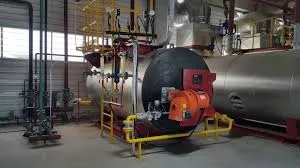
Там . 31, 2024 03:48 Back to list
how does a oil fired boiler work
How Does an Oil-Fired Boiler Work?
Oil-fired boilers are a popular choice for heating homes and buildings, particularly in areas where natural gas is not readily available. They are designed to burn oil to create hot water or steam, which is then circulated throughout the space to provide warmth. Understanding how an oil-fired boiler works can help homeowners appreciate its efficiency and maintenance needs.
The process begins with the storage of fuel oil in a tank located either above or below ground. This oil is usually a distillate fuel, such as kerosene or ultra-low-sulfur oil. When the thermostat signals the need for heat, the oil burner ignites and starts the combustion process. This ignition involves a series of components the fuel pump, nozzle, and ignition transformer.
How Does an Oil-Fired Boiler Work?
The heat exchanger is designed to transfer heat from the combustion gases to the water or steam in the system. In a hot water boiler, the water circulates through pipes, and as it passes through the heat exchanger, it absorbs heat, raising its temperature. In a steam boiler, the heated water turns into steam, which travels through pipes to radiators or other heating devices.
how does a oil fired boiler work

As the combustion process produces exhaust gases, these gases are expelled from the boiler through a flue. To ensure efficient operation and minimize harmful emissions, oil-fired boilers are equipped with several safety and control mechanisms. These include pressure switches, limit switches, and a stack temperature control that regulates the combustion process and prevents overheating.
Regular maintenance is essential for oil-fired boilers to operate efficiently. This involves cleaning the burner, checking filters, and ensuring that the flue is clear of obstructions. A well-maintained boiler not only operates efficiently but also has a longer lifespan and reduces the risk of breakdowns.
One of the benefits of oil-fired boilers is their ability to provide consistent and reliable heat. They can achieve higher temperatures compared to some other heating systems, making them suitable for colder climates. Additionally, advancements in technology have led to the development of high-efficiency oil-fired boilers that consume less fuel and emit fewer pollutants.
In summary, oil-fired boilers utilize a straightforward yet efficient process to convert oil into heat. Through a series of mechanical components, they ignite oil, generate hot water or steam, and distribute heat throughout a building. With proper maintenance, these systems can provide reliable warmth for many years, making them a valuable option for heating solutions.
-
Oil Fired Hot Water Boilers Sale - High Efficiency & Affordable
NewsJul.31,2025
-
High-Efficiency Commercial Oil Fired Steam Boiler for Industry
NewsJul.30,2025
-
High-Efficiency Biomass Fired Thermal Oil Boiler Solutions
NewsJul.30,2025
-
High Efficiency Gas Fired Thermal Oil Boiler for Industrial Heating
NewsJul.29,2025
-
High-Efficiency Gas Fired Hot Water Boiler for Sale – Reliable & Affordable
NewsJul.29,2025
-
High Efficiency Biomass Fired Hot Water Boiler for Industrial and Commercial Use
NewsJul.29,2025
Related PRODUCTS






















